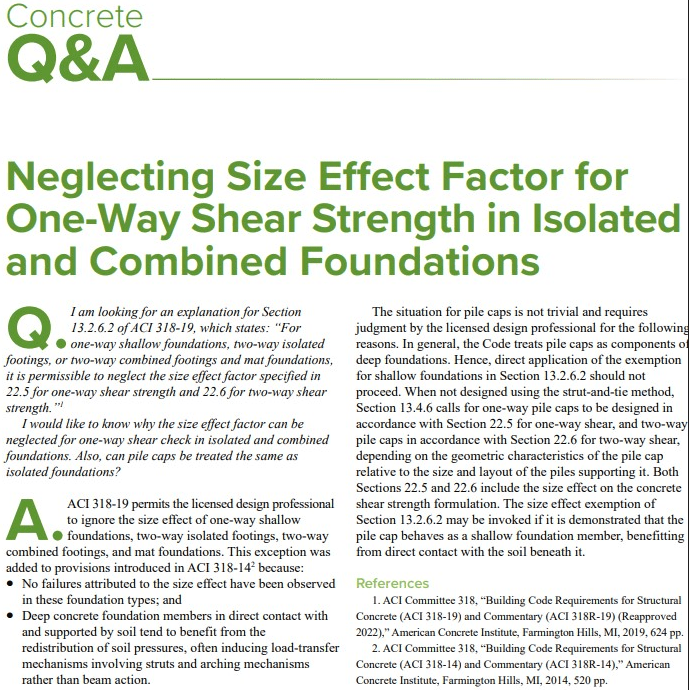GA_Engineer
Structural
- Jul 9, 2021
- 14
I have seen a few threads on here regarding the new one-way shear (reduced) capacity for slabs and pile caps in ACI 318-19. This change is seemingly only now coming to the forefront because more municipalities are adopting the 2021 IBC. I have not seen a thread yet regarding one-way shear check a pile cap and more specifically the corner pile. Most design programs use the CRSI equations for one-way shear of pile caps and have now input the new one-way shear equation into the old CRSI equation. This is seemingly making pile caps slightly thicker, which isn't a huge deal. However, when checking the corner pile one-way shear check, can you use the modified CRSI equation since your d>w or since you really aren't engaging any other piles you can't use the CRSI equations and need to just use the new ACI 318-19 one-way shear equation? If the latter is the case, most pile caps that have ever been designed using old code and are designed such that you are close to maxing out your pile capacity now suddenly fail. With this new size effect factor and the fact pile caps have substantial "d" values (as compared to slabs), the capacity of this corner pile is greatly reduced.
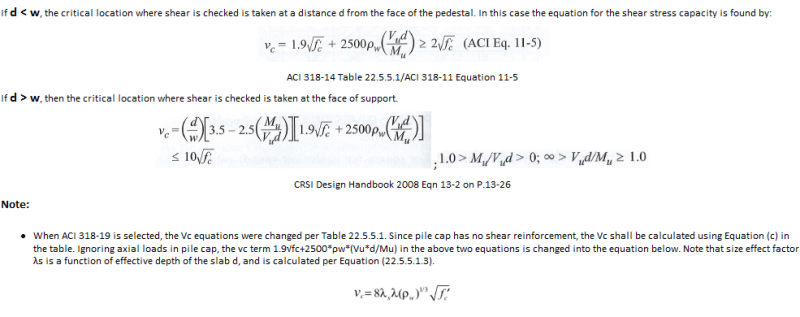
Personally, when I design pile caps, I just determine the design for a maximum PC-2, PC-3, PC-4, etc (i.e. maximum load in piles)... and then just make sure my gravity column loads are less than the maximum allowable load for each of my PC2, PC3, PC4, etc... design (I will input a load factor for the strength design). I mean this was the process that CRSI uses. In looking at a program like TEDDS, when I input the load to max out my pile loads using ACI 318-14 I get a reasonable sized PC-4 based on CRSI manuals and just practical experience:
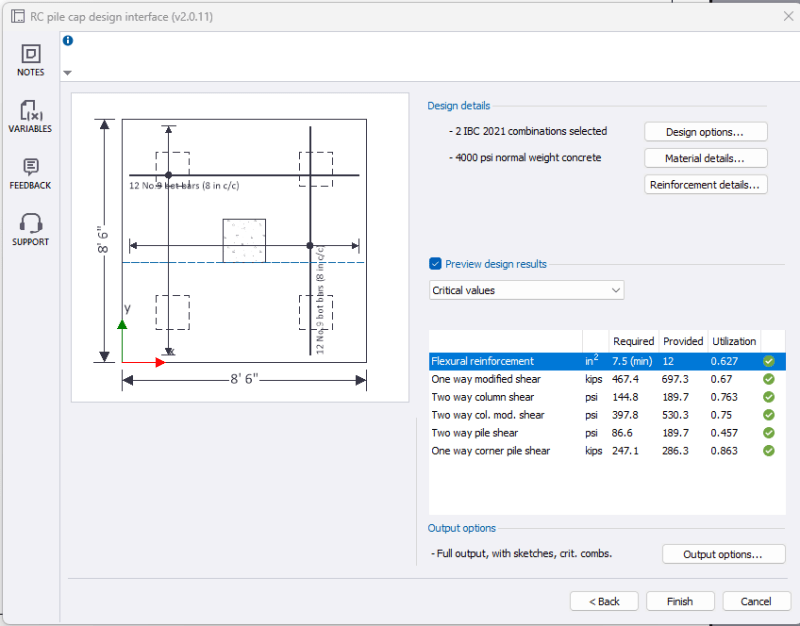

I change the code to ACI 318-19 and nothing works, especially the corner pile one-way shear. I can live with making the pile cap slightly deeper due to reduced shear in the old CRSI equation, but if I want my piles to have maximum load, there is no possible way to get one-way corner shear to work if I just use the new ACI 318-19 equation. My capacity has been reduced by over 50% just by changing code. So does this mean a whole lot of pile caps out in the field right now, across the country don't work (rhetorical question)?
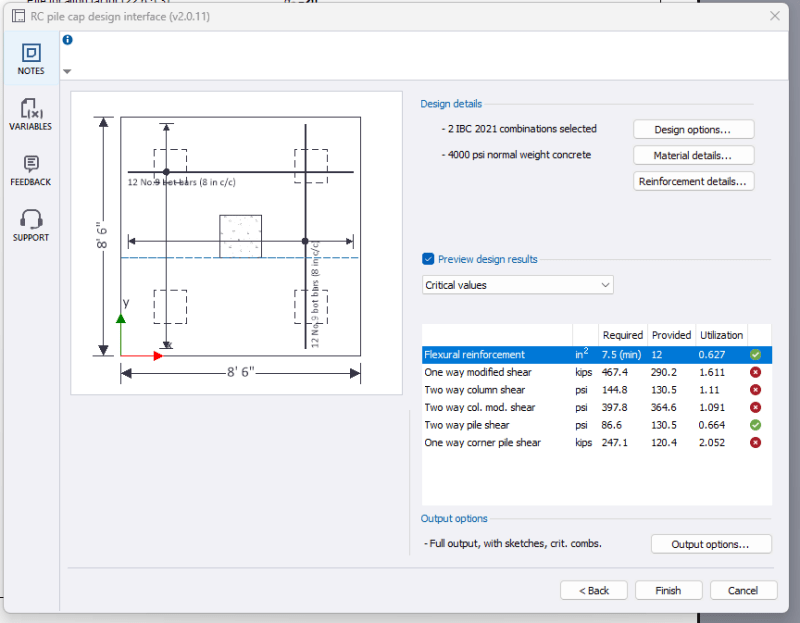
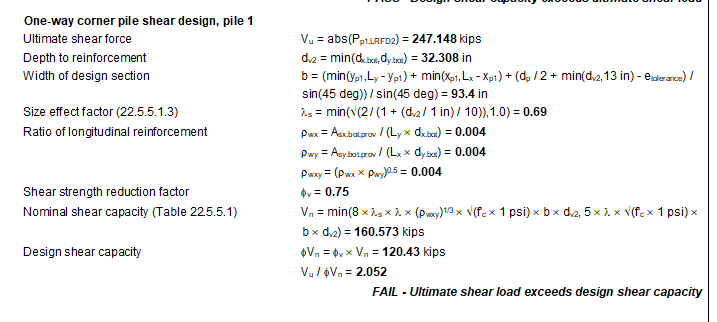

Personally, when I design pile caps, I just determine the design for a maximum PC-2, PC-3, PC-4, etc (i.e. maximum load in piles)... and then just make sure my gravity column loads are less than the maximum allowable load for each of my PC2, PC3, PC4, etc... design (I will input a load factor for the strength design). I mean this was the process that CRSI uses. In looking at a program like TEDDS, when I input the load to max out my pile loads using ACI 318-14 I get a reasonable sized PC-4 based on CRSI manuals and just practical experience:


I change the code to ACI 318-19 and nothing works, especially the corner pile one-way shear. I can live with making the pile cap slightly deeper due to reduced shear in the old CRSI equation, but if I want my piles to have maximum load, there is no possible way to get one-way corner shear to work if I just use the new ACI 318-19 equation. My capacity has been reduced by over 50% just by changing code. So does this mean a whole lot of pile caps out in the field right now, across the country don't work (rhetorical question)?





